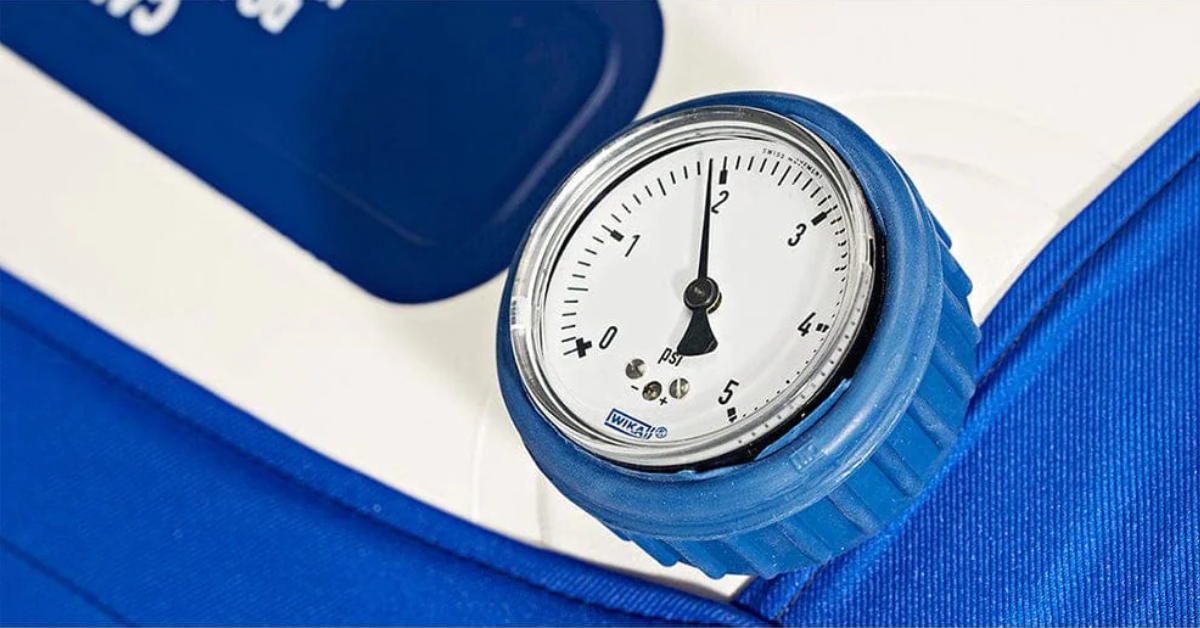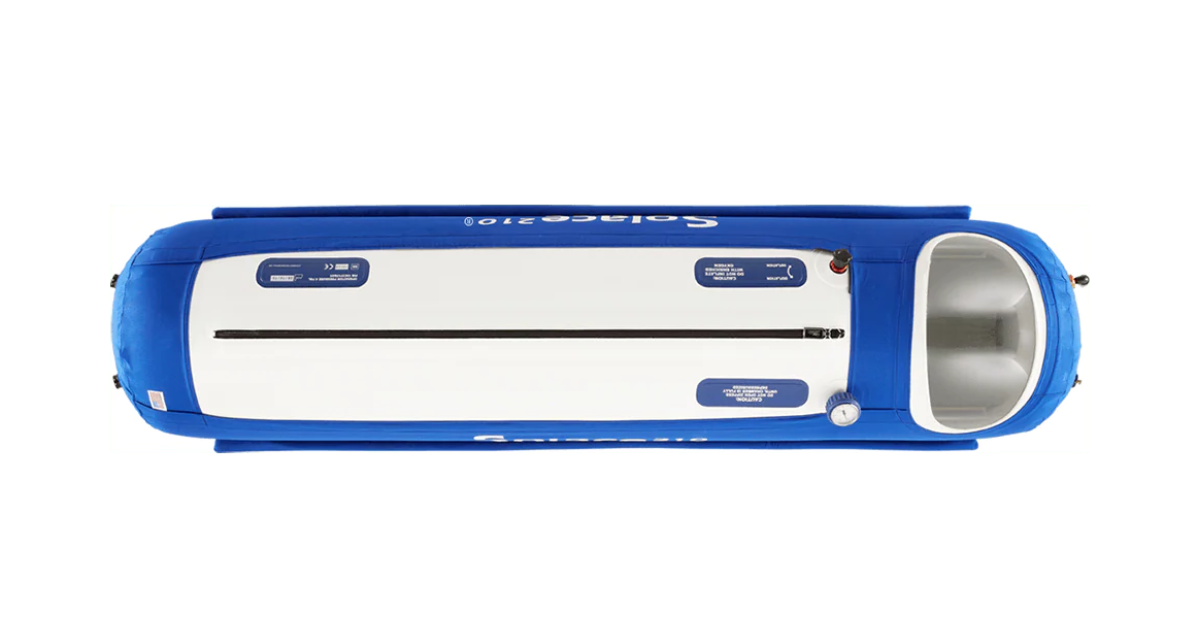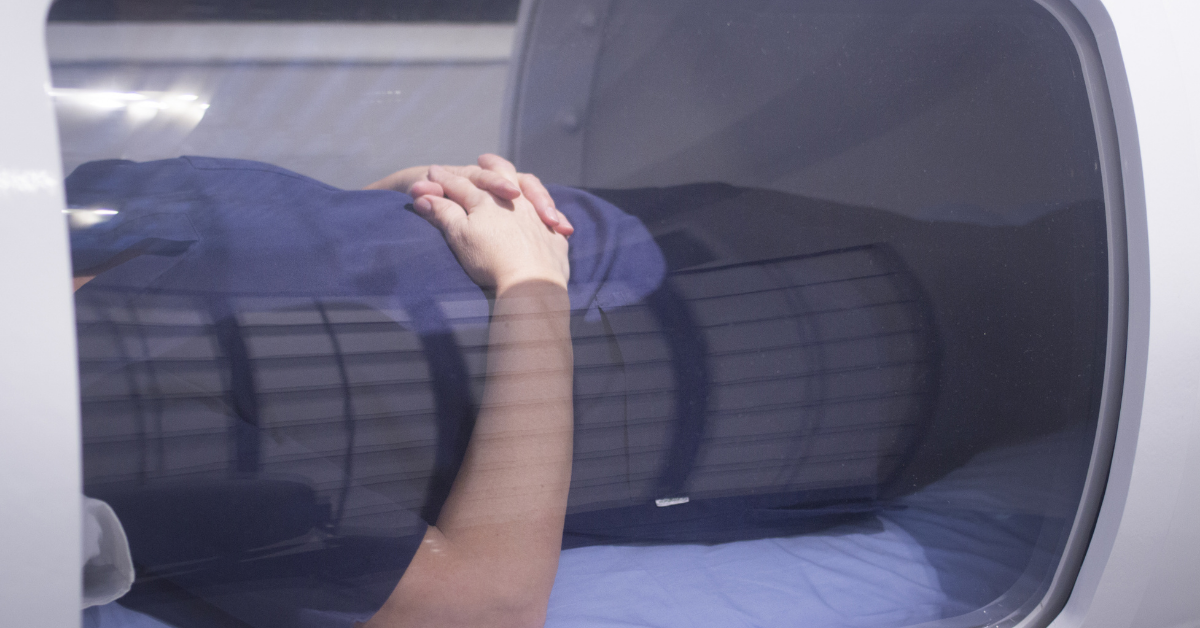In today's fast-paced world, it's essential to prioritize our health and well-being. One innovative treatment that has gained significant attention in recent years is oxygen hyperbaric treatment, also known as hyperbaric oxygen therapy (HBOT). This therapy has been proven to provide numerous health benefits, from promoting healing to improving the overall quality of life. In this article, we'll explore the science behind HBOT and how it can help improve your life.
Understanding Hyperbaric Oxygen Therapy (HBOT)

Hyperbaric oxygen therapy is a medical treatment that involves breathing pure oxygen in a pressurized environment, typically inside a hyperbaric chamber. The therapy is well-established for treating various medical conditions, including decompression sickness, carbon monoxide poisoning, gangrene, and non-healing wounds. HBOT has also been shown to enhance the body's natural healing processes, making it a valuable addition to many treatment plans.
The Science Behind HBOT
HBOT works by increasing the air pressure inside the hyperbaric chamber to 1.3 to 3 times higher than normal air pressure. This increase in pressure allows the lungs to gather more oxygen than they would under normal conditions. As a result, the blood carries extra oxygen to the body's tissues, promoting healing and fighting off infections, and treating numerous medical conditions.
How Increased Air Pressure Benefits the Body
The increased air pressure and oxygen levels achieved during HBOT provide numerous benefits to the body. For example, the extra oxygen helps fight bacteria and stimulates the release of growth factors and stem cells, which are crucial for repairing damaged tissues. In addition, HBOT increases the amount of oxygen that the blood can carry, encouraging normal tissue oxygen levels even after therapy is completed.
Hyperbaric oxygen therapy has also been shown to improve blood flow, reduce inflammation, and promote the formation of new blood vessels. These combined effects can help accelerate the healing process for various medical conditions and improve overall health and well-being.
Medical Conditions Treated with HBOT
Hyperbaric oxygen therapy has been proven effective in treating a wide range of medical conditions. Here, we'll delve into some of the most common applications of HBOT, from decompression sickness and gas embolism to chronic wounds and diabetic foot ulcers.
Decompression Sickness and Air or Gas Embolism
Decompression sickness, also known as the bends, is a condition that affects scuba divers who surface too quickly, causing nitrogen bubbles to form in the bloodstream and tissues. These bubbles can cause severe pain, joint stiffness, and even paralysis. Similarly, air or gas embolism occurs when air or gas bubbles enter the bloodstream, potentially blocking blood flow to vital organs. This condition can result from diving accidents, medical procedures, or trauma.
Hyperbaric oxygen therapy is an effective treatment for both gas embolism and decompression sickness, as the increased pressure helps dissolve the gas bubbles and restore normal blood flow.
Carbon Monoxide Poisoning and Gas Gangrene
Carbon monoxide poisoning occurs when the odorless, colorless gas displaces oxygen in the blood, depriving the body's tissues of the oxygen they need to function properly. Symptoms can range from mild headache and dizziness to severe confusion, unconsciousness, and even death. HBOT is highly effective in treating carbon monoxide poisoning, as pure oxygen helps displace the carbon monoxide from the bloodstream and delivers the necessary oxygen to the body's tissues.
Gas gangrene is a rare but potentially life-threatening bacterial infection that produces gas within the affected tissues. This infection can lead to tissue death and spread rapidly throughout the body. HBOT is an effective adjunctive treatment for gas gangrene, as the increased oxygen levels help kill the bacteria responsible for the infection and promote healing in the affected tissues.
Non-Healing Wounds and Diabetic Foot Ulcers
Chronic, non-healing wounds can result from various factors, including poor circulation, diabetes, and prolonged pressure on the affected area. These wounds can be challenging to treat and may lead to severe complications if left untreated. HBOT has been shown to promote healing in non-healing wounds by increasing oxygen delivery to the affected tissues, reducing inflammation, and stimulating the growth of new blood vessels.
The HBOT Treatment Process

Before undergoing hyperbaric oxygen therapy, patients must consult with their healthcare provider to determine if HBOT is appropriate for their specific medical condition. Once approved for treatment, patients will be thoroughly briefed on the process and any necessary preparations, such as avoiding certain medications or wearing comfortable, loose-fitting clothing.
Inside a Hyperbaric Oxygen Therapy Chamber
Throughout the treatment process, individuals enter a sealed and airtight hyperbaric oxygen chamber that is specifically constructed to endure heightened air pressure. Within this hyperbaric environment and oxygen concentrator, patients receive pure oxygen through the use of a mask or hood, facilitating their inhalation of uncontaminated air. Over time, the atmospheric pressure within the chamber is gradually increased, reaching a level two to three times higher than the normal air pressure. This allows the lungs to intake an increased quantity of oxygen, subsequently delivering it to the body's tissues to promote heightened therapeutic benefits.
Monoplace vs. Multiplace Chambers
There are two main types of hyperbaric oxygen therapy chambers: monoplace and multiplace chambers. Monoplace chambers are designed to accommodate a single patient, who lies down on a stretcher inside the chamber. The entire chamber is filled with pure oxygen, and the pressure is increased according to the treatment plan.
Multiplace chambers, on the other hand, can accommodate more than one person at a time, allowing multiple patients to receive treatment simultaneously. In a multiplace chamber, patients sit or recline in comfortable seats, and pure oxygen is delivered through masks or hoods. The air pressure inside the chamber is increased, just as in a monoplace chamber, to deliver the necessary oxygen levels to the patients' bodies.
Treatment Duration and Session Frequency
Hyperbaric oxygen therapy sessions typically last approximately 45-90 minutes, during which patients can relax, read, or even watch a movie. The exact duration of each session will depend on the specific medical condition being treated and the patient's individual needs.
The number of treatment sessions required will also vary based on the medical condition and the patient's response to therapy. Some conditions may require only a few sessions, while others may necessitate ongoing treatment over several weeks or months.
Safety and Potential Risks of HBOT
Hyperbaric oxygen therapy is generally considered a safe treatment with few serious complications. However, as with any medical procedure, there are potential risks and side effects that patients should be aware of before undergoing treatment. It is crucial to discuss your medical history, current medications, and any pre-existing conditions with your healthcare provider before undergoing hyperbaric oxygen therapy to ensure that it is a safe and suitable treatment option for your specific medical condition.
Common Side Effects and Precautions
Some common side effects of hyperbaric oxygen therapy include ear pain or discomfort due to increased air pressure, fatigue, and temporary changes in vision. These side effects are generally mild and resolve on their own after treatment is completed. To minimize the risk of ear pain, patients are typically advised to practice techniques to equalize ear pressure, such as swallowing, yawning, or pinching the nose and gently blowing. Oxygen toxicity is a potential risk of HBOT, affecting the central nervous system and/or the lungs, but keeping the pressure below 2.0 ATA and the time to 60 minutes significantly reduces this risk. A skilled hyperbaric therapist can further limit the risk of oxygen toxicity if dosages are used above 2.0 ATA and for longer than 60 minutes. It is important to note that the information provided on this website is for educational purposes only and not intended as a substitute for professional medical advice.
Oxygen Toxicity and Lung Collapse
While rare, more serious complications of HBOT can occur, such as oxygen toxicity and lung collapse. Oxygen toxicity can result from breathing too much oxygen and may cause symptoms such as dizziness, nausea, and seizures. Lung collapse, or pneumothorax, can occur if there is a significant change in air pressure during treatment, leading to the lung collapsing and potentially causing shortness of breath and chest pain.
To reduce the risk of these complications, patients should follow their healthcare provider's instructions carefully and immediately report any unusual symptoms or discomfort during treatment.
The World of Hyperbaric Medicine: A Closer Look at Key Aspects

Vascular Endothelial Growth Factor in Wound Healing
Vascular endothelial growth factor (VEGF) is a protein that plays a vital role in the formation of new blood vessels. During hyperbaric oxygen therapy, the increased oxygen levels stimulate the release of VEGF, which promotes the growth of new blood vessels and improves blood flow to injured tissues. This enhanced blood flow aids in wound healing and tissue repair, making HBOT an effective treatment for chronic wounds and diabetic foot ulcers.
The Connection between White Blood Cells and Infection Control
White blood cells are essential components of the immune system, responsible for fighting infections and keeping the body healthy. Hyperbaric oxygen therapy has been shown to enhance the function of white blood cells, enabling them to effectively eliminate bacteria and other pathogens. This improved immune response contributes to the overall healing process and helps combat chronic infections.
Treating Diverse Medical Conditions
Hyperbaric chambers play a crucial role in delivering the benefits of hyperbaric oxygen therapy (HBOT) to patients. These chambers come in various forms, such as monoplace and multiplace chambers, to accommodate different treatment needs. The versatility of hyperbaric chambers allows them to be used in treating a wide range of medical conditions, from decompression sickness and carbon monoxide poisoning to non-healing wounds and radiation injury. The increased pressure and pure oxygen within the chamber promote healing, improve blood flow, and stimulate the release of growth factors and stem cells, making HBOT a valuable treatment option for many patients.
A recent study has shed light on the potential of HBOT in enhancing the effectiveness of regenerative plastic surgery using adipose-derived stem cells. The study investigated the impact of HBOT at 3 ATA on these stem cells and found that it increases their viability and proliferation, alters marker expression and subpopulations, reduces TGF-β secretion, and directs adipose-derived stem cells towards adipogenic differentiation. This suggests that hyperbaric chambers can play a significant role in not only treating various medical conditions but also improving the outcomes of regenerative plastic surgery procedures that utilize adipose-derived stem cells.
From Oxygen Toxicity to Enhanced Healing
The foundation of hyperbaric oxygen therapy (HBOT) lies in the power of extra oxygen delivered under increased pressure. This more oxygen-rich environment helps the body heal more effectively, fight infections, and improve overall health. However, it's essential to be aware of potential risks, such as oxygen toxicity, which can result from breathing too much oxygen. By working closely with healthcare providers and following their guidance, patients can safely harness the power of oxygen in hyperbaric medicine to improve their lives and overcome various medical challenges.
HBOT in a Comprehensive Treatment Plan

Hyperbaric oxygen therapy is often just one component of a comprehensive treatment plan tailored to the individual's specific needs and medical conditions. It is important to remember that HBOT is not a standalone treatment but rather a complementary therapy that can enhance the effectiveness of other treatments and medications.
Combining HBOT with Other Therapies and Medications
Depending on the medical condition being treated, HBOT may be combined with various other therapies and medications to maximize its benefits. For instance, in the case of non-healing wounds, HBOT can be used in conjunction with wound care treatments, antibiotics, and pain management. Similarly, for patients undergoing radiation therapy, HBOT can help alleviate radiation-induced tissue damage and promote healing.
Working with Your Healthcare Provider
Your healthcare provider plays a crucial role in determining if HBOT is suitable for your specific medical condition and in developing a comprehensive treatment plan that includes HBOT as a complementary therapy. It is important to maintain open communication with your healthcare provider, ask questions, and discuss any concerns you may have regarding the treatment.
Your healthcare provider will also monitor your progress throughout the course of treatment and may adjust your treatment plan as necessary based on your individual needs and response to therapy.
Frequently Asked Questions
What does a hyperbaric oxygen therapy session feel like?
During an HBOT session, you may experience mild pressure changes similar to those felt during air travel. You will be able to breathe normally and comfortably while inside the chamber. Some patients may experience mild discomfort in their ears due to the increased air pressure, but this can usually be managed by equalizing ear pressure using techniques such as swallowing, yawning, or pinching the nose and gently blowing.
How many HBOT sessions will I need?
The number of HBOT sessions required will depend on the specific medical condition being treated and your individual response to therapy. Some conditions may require only a few sessions, while others may necessitate ongoing treatment over several weeks or months. The 40-hour protocol is the gold standard for many physiological benefits observed with HBOT, but actual physiological benefits can be seen in just a few sessions. HBOT's effects can range from immediate anti-oxidant and protective roles, to anti-inflammatory responses within 4 days, pain relief after 5 to 10 sessions, and new blood vessel formation (angiogenesis) in 10 to 20 sessions.
How Many Sessions Will I Need for My Condition?
The number of HBOT sessions required will depend on the specific medical condition being treated and your individual response to therapy. Some conditions may require only a few sessions, while others may receive ongoing treatment over an extended period. Your healthcare provider will assess your progress throughout the course of treatment and may adjust the number of sessions as needed based on your individual needs and response to therapy.
Oxygen Hyperbaric Treatment Financing
Airpuria offers affordable financing options for oxygen hyperbaric treatment systems, with 0% interest rates for up to 18 months for qualifying individuals and special financing programs for businesses.
Explore financing options:
For individuals:
-
https://www.7figures.app/Airpuria: Unsecured term loans, lines of credit, and revolving lines in as little as 48 hours.
For businesses:
-
https://reliantcapitalgrp.com/airpuria: Custom financial solutions, competitive rates, flexible terms, and quick approvals for finance agreements, leases, rental programs, and working capital loans.
Additional Information About HBOT:
HBOT Chambers from Airpuria (Free Shipping):
Prescription or Doctor's Note
To purchase an Oxyhealth Hyperbaric Oxygen Chamber, a prescription or doctor's note is required. You can either upload the document above or send it to sales@airpuria.com. Submit your doctor's note within 2 weeks of your purchase. If you have any questions or need to speak to one of our licensed doctors, contact The Airpuria team for assistance.

